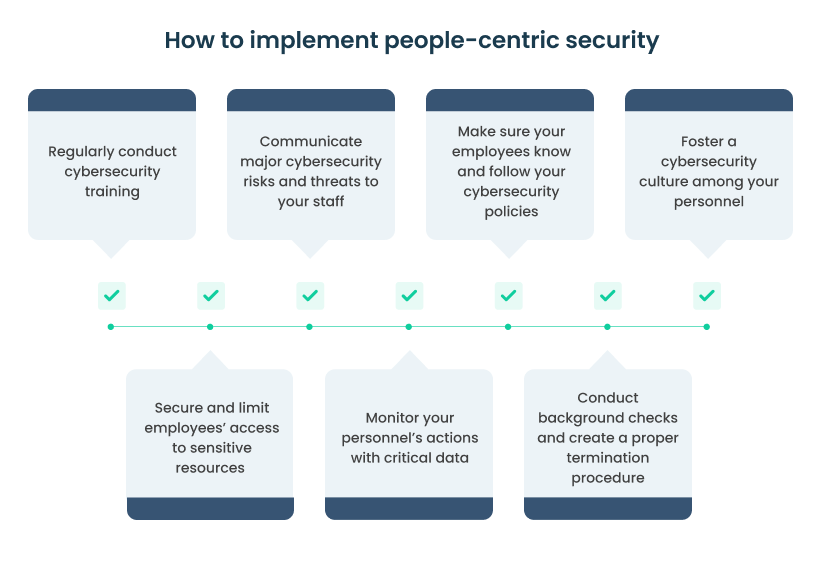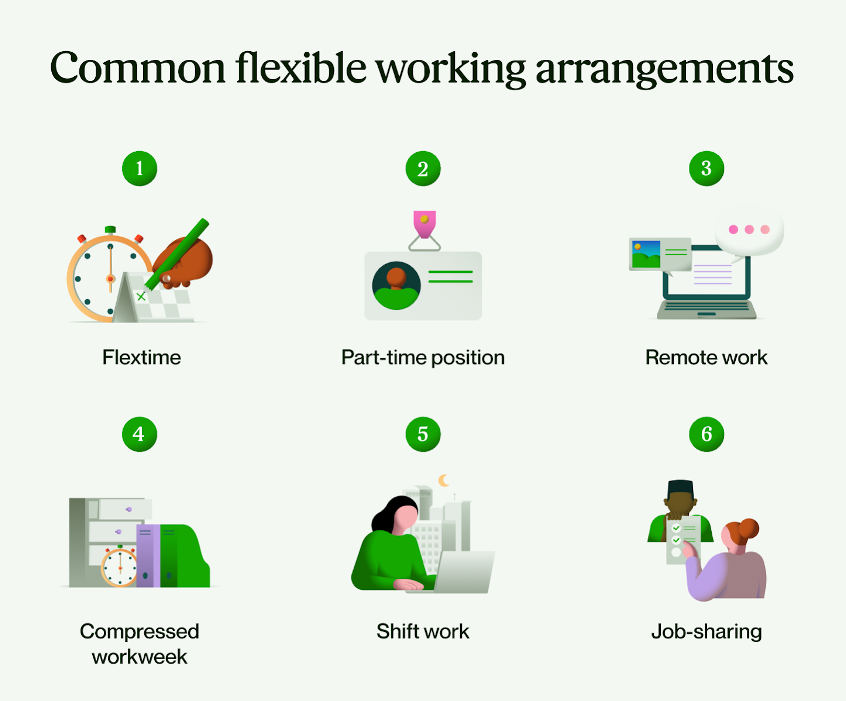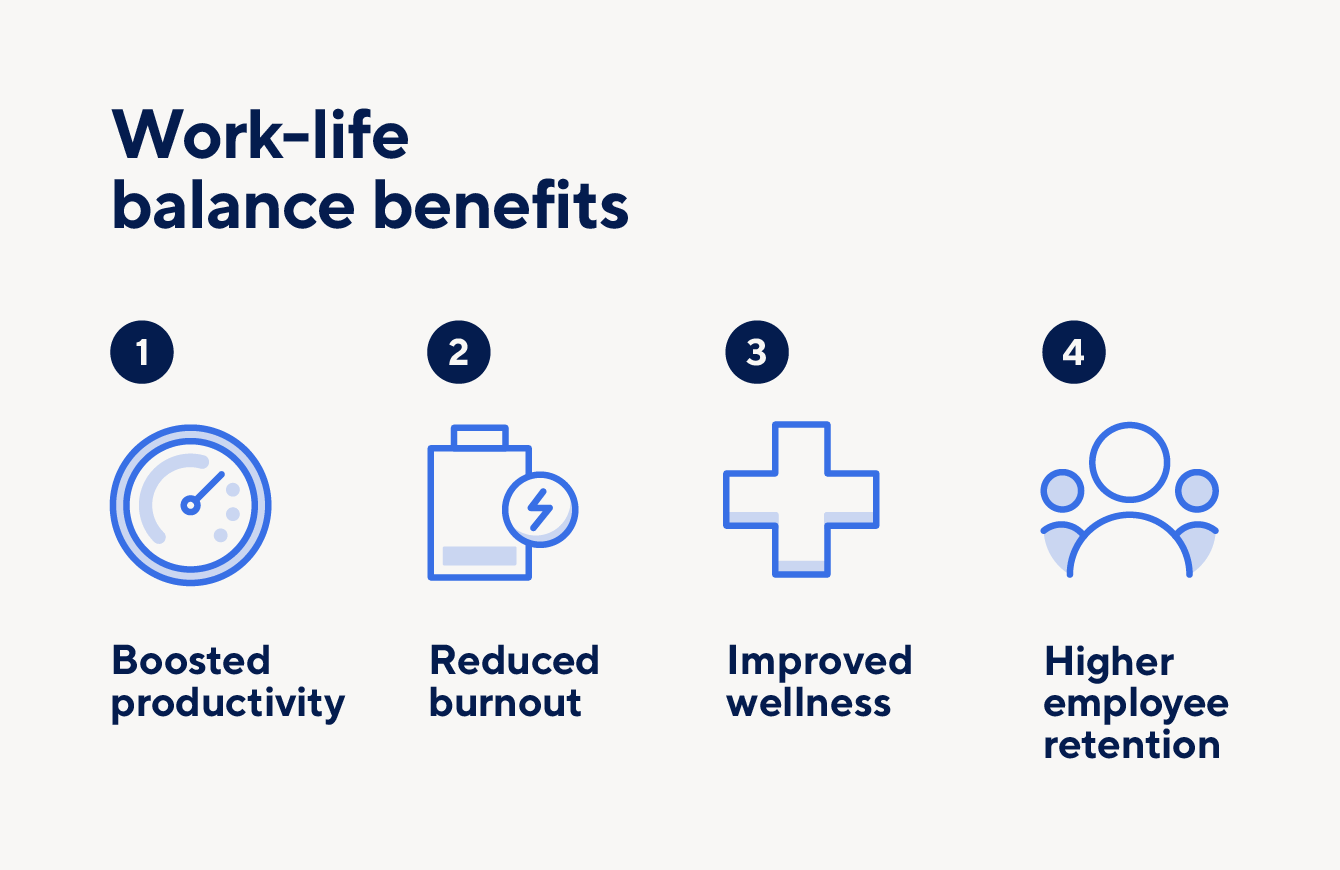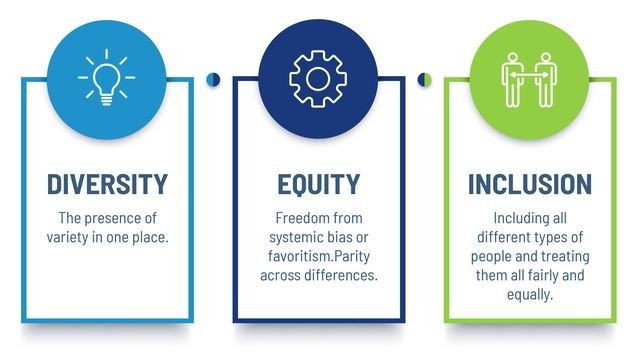Office scenes are not what they used to be – but for all the good reasons. Flexibility has taken over the office culture. For some, it translates to fully remote roles while others find their sweet spot in hybrid environments. However, managing a hybrid workforce adds an extra layer of complexity to the mix.
Creating a strong workplace culture is essential for the success of the hybrid model. With it becoming common, it is smart to let go of old-fashioned management styles and think up modern strategies that fit this modern way of working.
This is why we came up with a round-up of 12 factors to consider when managing a hybrid workforce. These pointers will help you give an exceptional employee experience and also empower your hybrid team to do the best they can.
What Is A Hybrid Workforce?
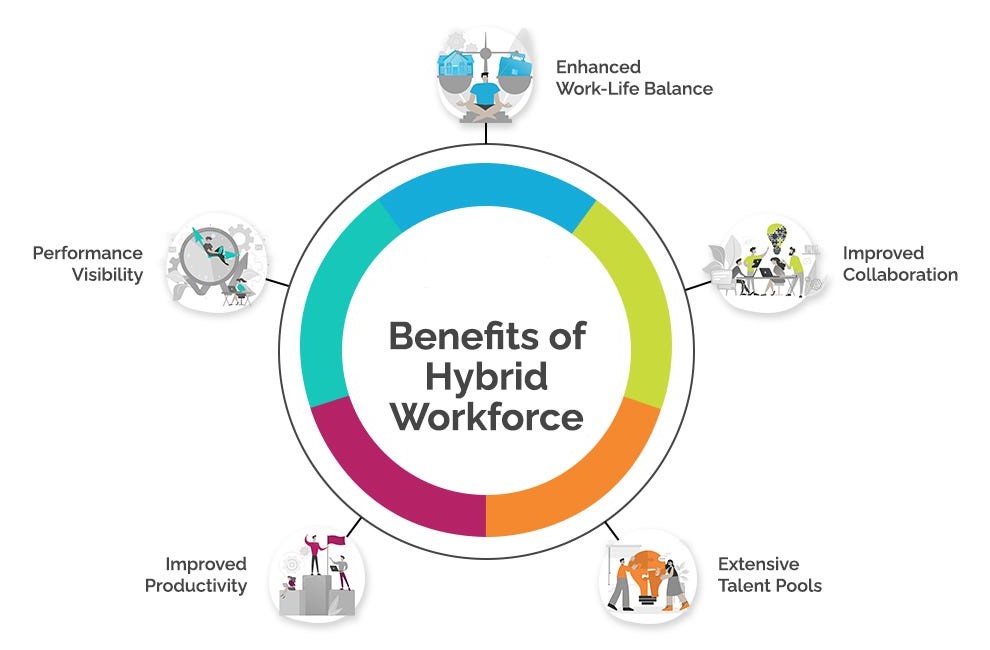
A hybrid workforce is a work model where company employees work both remotely and in a physical office or other designated workplace. It blends the flexibility of remote work with the structure and collaboration of an office environment. In a hybrid work environment, employees can choose when and where they work based on the nature of their tasks, personal preferences, or the company’s policies.
Recently, several factors caused a surge in the hybrid environment. Startup culture played a massive role in pushing this trend forward. Startups are all about flexibility and innovation and that spills over into how they structure their work.
One of the remarkable strengths of a hybrid workforce model is its ability to tap into a global talent pool. This approach empowers your business to diversify the team with specialized skills from around the world.
For instance, consider the strategic advantage of hiring an accounting graduate. This hire facilitated by the flexibility of the hybrid model, brings unique insights and expertise, enhancing the financial acumen of your team.
This way, they can tap into a wider pool of skilled remote workers rather than limiting themselves to a specific geographical area.
Then there is the influx of VC funds. With more venture capital flowing into startups, there is this pressure to scale fast and smart. One way to do that? Embrace the hybrid model. It is cost-effective, offers access to diverse talent pools, and can help attract top employees who might not be comfortable with a 9-to-5 office routine.
Search fund investors have also played a major role here. They see the value in companies that are adaptable and can pivot as needed. For many businesses, having a hybrid team setup with remote employees makes them more attractive to search fund investors looking for companies with adaptable and forward-thinking strategies.
What’s impressive about this shift is how it is impacting businesses. The hybrid work model has shattered the traditional 9-to-5 office routine. It introduced a more flexible model, allowing employees to strike a balance between work and personal life.
That’s not all. It is about productivity too. Studies have shown that remote workers can be just as or even more productive than their in-office counterparts.
Without a doubt, everything seems to be pointing towards the staying power of the hybrid workforce model. But getting into it without considering crucial factors could cause some serious backfires. That’s why we will discuss these elements to make sure that your hybrid setup does not end up causing more problems than it solves.
12 Factors To Consider When Managing A Hybrid Workforce
Let’s take a closer look at 12 factors that can make a difference in how we handle our hybrid workforce.
1. Consider Communication Tools & Protocols
You need advanced communication tools that work for both remote and in-person employees. Look for platforms that allow seamless collaboration – Slack, Microsoft Teams, or Zoom. It is not just about picking one; it is about making sure everyone knows how and when to use them.
Set protocols for communication – like which tool to use for urgent matters, regular updates, or informal chats. Be clear on response times too. This ensures a level playing field for every individual employee whether they are in the office or working remotely.
Let’s say you run a design agency with a hybrid team. You have graphic designers in the office and web developers working remotely. To keep things smooth, you use Slack for day-to-day chats, Zoom for weekly team meetings, and Nimble for project management.
Your protocols? Urgent matters on Slack, weekly updates on Zoom, and Nimble for tracking project progress. This way, everyone knows where to go for what and when to expect a response.
While we’re fine-tuning our communication tools and protocols, it’s also important to think about practical issues like power reliability for our remote team members. That’s where incorporating custom solar power solutions comes into play.
It’s a practical solution to ensure that our remote employees don’t face work disruptions because of power outages. By providing an alternative power source like solar, we’re helping to keep our team connected and productive, no matter where they are. You can either subsidize the full cost of the solar power solution or offer to pay a part of it.
2. Prioritize Clear Expectations For Remote & In-Person Work
Define what success looks like for both remote and in-office work. It is more than just tasks. It is about the whole package – availability, working hours, deadlines, and even the quality of work. This avoids confusion and ensures everyone is on the same page.
Make sure your expectations are realistic and feasible for both remote and in-office scenarios. For instance, don’t expect an immediate response from a remote worker if they are in a different time zone.
Consider a marketing firm. Their marketing strategists work in the office while content writers and social media managers work remotely. The firm sets clear expectations: office hours are 9-5 for the in-office team but the remote workers have flexible hours as long as they meet deadlines.
Deadlines, however, are non-negotiable for both teams. Setting these expectations would ensure that everyone knows what is expected of them regardless of their location.
3. Establish Equitable Policies For Both Remote & On-Site Employees
Start by developing policies that cater to the needs of both remote and on-site employees. Things like work hours, time off, performance evaluations, and access to resources should be clear and consistent for everyone.
Make sure these policies address the unique challenges each group faces – remote teams might need more flexible hours while an office employee might require clear guidelines for remote work approvals.
Consider a tech company with a hybrid setup. The company sets policies that grant equal access to resources for all employees – remote or on-site. They implement flexible work hours for developers but have core hours for virtual meetings that accommodate different time zones.
Performance reviews consider the nature of work – sales teams might have different metrics than developers. This way, regardless of where they work, employees feel they are treated fairly.
4. Ensure Robust Cybersecurity Measures
In hybrid workplaces where employees toggle between working in-office and remotely, the risk of security breaches increases. Make strict cybersecurity measures part of company culture – things like:
- Secure VPNs
- Regular security training
- Multi-factor authentication
- Encrypted communication tools
Also, establish clear protocols for handling sensitive data and make sure employees are aware of these protocols.
Imagine a medical setting adopting a hybrid work model. It conducts a thorough assessment of regulations like HIPAA to understand cybersecurity requirements for remote work and sensitive patient data.
They implement encrypted communication channels between patient data sources and the EHR systems to ensure secure transmission of data, using encryption protocols compliant with healthcare privacy regulations.
Sensitive patient information collected from imaging centers, online health forms, and personal emergency response systems is stored in encrypted databases with restricted access controls. Cloud storage solutions adhere to strict security measures compliant with healthcare data privacy laws.
These measures ensure that whether working from the facility or remotely, the healthcare organization maintains the highest level of data security.
5. Provide Adequate Technical Support For Remote Work Setups
For remote employees to perform optimally, ensuring they have the right technical support is crucial. Start by assessing their needs. Are they equipped with the necessary hardware and software?
Make sure they have access to reliable internet connectivity and the necessary tools for secure data access. Offer clear guidelines or manuals on troubleshooting common tech issues. Also, establish a support system, like an IT helpdesk or designated tech support personnel, to assist employees when problems arise.
Consider an advertising agency with remote employees handling custom logo designs and overall creative design projects. The company ensures remote workers have high-quality design software licenses and robust computers or laptops with enough processing power.
They provide guidelines on troubleshooting software issues and have an IT team available during working hours for immediate assistance. As a result, the remote team can work seamlessly without technical hindrances, enhancing employee productivity. Investing in digital employee experience software can further enhance remote work setups by streamlining IT support. These platforms enable proactive monitoring and quick resolution of technical issues, minimizing downtime. For instance, remote teams working on creative projects, like custom logo designs, can benefit from seamless integration of design tools and automated software updates. By using advanced solutions to simplify IT management, companies can ensure employees stay focused and productive.
6. Implement Flexible Scheduling Options
Flexibility in scheduling allows employees to balance work and personal commitments which improves employee engagement and productivity. Start by understanding the team’s needs and preferences.
Consider options like flexitime, compressed workweeks, or allowing employees to set their hours within certain parameters. Encourage open communication to coordinate schedules among team members. Use collaboration tools and explore how to monitor remote employees effectively to ensure accountability while respecting flexibility..
In a logistics company, 2 teams are working under different flexible scheduling arrangements. One team prefers flexitime which allows them to adjust their work hours to accommodate personal obligations.
The other team follows a compressed workweek where they work longer hours on fewer days and get extended weekends. Both teams use shared calendars and communication platforms to coordinate their schedules for seamless collaboration despite the varied working hours.
7. Encourage Regular Team Bonding
Effective bonding among hybrid workers requires intentional efforts. Create a sense of belonging and camaraderie among employees, regardless of their work locations. Schedule recurring team meetings to discuss projects, updates, and maintain regular contact among team members.
Organize virtual team-building events or casual gatherings to nurture relationships and team spirit. Make sure that both office and remote workers have equal opportunities to participate in discussions and decision-making processes.
In a legal firm with a hybrid workforce model, headquarters staff manage operations from the office while regional managers work remotely. To encourage team bonding, the management schedules weekly virtual meetings for all staff to discuss strategies and updates.
They organize monthly online trivia games and team quizzes to foster connections across locations. Additionally, the chain uses collaborative software that allows real-time engagement and idea-sharing among teams. This nurtures a strong team bond which, in turn, improves collaboration and increases productivity in the hybrid workplace.
8. Offer Training On Remote Work Best Practices
Managing a hybrid workforce involves ensuring everyone is equipped with the right skills for remote work. Understand what skills your employees require for remote work. This can be communication tools, time management, setting boundaries, and cybersecurity practices.
Develop training programs that cater to these needs. Include practical examples and scenarios to make the training relatable. Make training sessions interactive and encourage participation. Employees learn better when they are actively engaged through a training presentation. Incorporate discussions, Q&A sessions, or group activities to foster engagement.
Additionally, ensuring robust cybersecurity measures for handling sensitive client data is also an important concern. The company creates workshops and resources tailored to each department’s needs. Sales teams undergo simulated virtual consultation sessions to refine their pitch strategies.
9. Provide Work-Life Balance Support
Ensuring work-life balance in hybrid workplace models is about empowering employees to manage their time effectively. Create a culture where personal time is respected and encourage clear boundaries between work and personal life, avoiding after-hours emails or calls.
Allow employees to set their work hours so they can accommodate their most productive times and personal obligations. Provide resources or programs focused on mental health, stress management, and maintaining a healthy work-life balance.
Imagine a technology startup with a hybrid work culture. Developers and designers prefer a mix of office and remote work. To support work-life balance, the company offers remote work options twice a week so that the team members to manage personal commitments.
The startup also organizes weekly mindfulness sessions and fitness classes during work hours for a healthy work-life balance. This approach results in a more engaged and satisfied workforce that contributes positively to the company’s productivity.
10. Assess & Optimize Productivity Tracking Methods
Determine what productivity looks like for different roles. It might be output-based for some while others might require more qualitative assessments. Invest in tools that can help monitor progress and workflow.
Tailor tracking methods based on job roles. Continuously review and refine tracking methods. Assess their effectiveness, gather employee feedback, and make adjustments accordingly to ensure they align with the company’s goals.
Consider a hospitality chain managing a hybrid workforce, including hotel staff (on-site) and remote corporate support teams. The chain identifies guest satisfaction and room turnover times for on-site staff and number of inquiries handled and resolution time for remote teams.
They implement a guest feedback system for on-site staff and a ticketing system for remote teams. For housekeeping staff, they developed a checklist-based app to track room turnover times. Corporate support teams use project management tools to monitor tasks and timelines.
This increases efficiency in hotel operations while enabling seamless task management for remote corporate teams.
11. Develop Guidelines For Hybrid Meeting Etiquette
Encourage the use of collaboration tools that facilitate equal participation. Establish protocols for sharing screens, muting/unmuting, and addressing technical issues. Make sure everyone can contribute. Moderators should actively involve remote participants.
Imagine a digital agency adopting a hybrid approach with creative teams in the office and account management teams working remotely. They use video conferencing tools that allow screen sharing and breakout rooms for brainstorming sessions. Clear guidelines are set for muting, camera usage, and sharing materials.
Moderators ensure remote team members are called upon during discussions and have designated time slots for contribution. This ensures their input is valued and integrated into decision-making.
Post-meeting surveys gather feedback on meeting effectiveness. The agency notes increased remote employee satisfaction and tweaks guidelines based on suggestions for better inclusivity.
12. Integrate Diversity, Equity, & Inclusion (DEI) Initiatives
Start by assessing the current state of diversity and inclusion within the company. Understand the demographics of the workforce and identify potential areas of improvement or underrepresentation.
Develop DEI strategies that cater to a hybrid work setting. Promote engagement and active participation across all work setups and regularly assess the impact of DEI initiatives on the employee experience, team culture, and overall morale.
Consider a software house with a hybrid workforce. The company conducts surveys and focus groups to understand employee perspectives on diversity and inclusion. They find that remote customer support teams feel somewhat disconnected from company-wide DEI initiatives because of their remote setup.
The company organizes virtual DEI workshops and forums that cater to different time zones, making it accessible for both in-office developers and remote support teams. They also establish remote-friendly mentorship programs to foster inclusivity.
Virtual discussion boards and chat channels are created for employees to share experiences and ideas related to diversity and inclusion. Regular town hall meetings incorporate remote participation to ensure everyone feels heard and included in discussions. This positively impacts team culture and enhances the overall employee experience.
Conclusion
Managing a hybrid workforce demands adaptability and foresight. Embrace change as a constant and grow with it. Experimentation becomes your ally – try different approaches, see how they work, and refine your strategies accordingly.
Leadership holds the torch to set the tone. Build trust in your teams so they feel confident to take charge and do well no matter where they are working. Tech can help in reaching your big goals.
One tool you can rely on for effectively managing your hybrid workforce is Nimble. Our project management platform offers a suite of products and solutions to help you manage your work more effectively.
Its adaptive work management approach allows teams to manage their work in a way that is best suited to their needs. Nimble provides real-time visibility into project progress so that teams can always stay up-to-date on the latest information.
Book your free demo to see Nimble in action or contact us directly to learn more.


